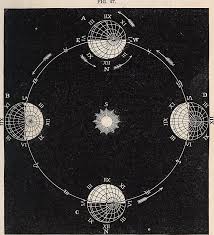
The Summer Solstice is a fascinating astronomical event that occurs annually, marking the official beginning of summer in the Northern Hemisphere. Let’s explore the science behind this phenomenon.
What Is the Summer Solstice?
The summer solstice is the day when the Sun reaches its highest point in the sky, resulting in the longest daylight hours of the year. It occurs around June 20 or 21, depending on your location. Here’s why it happens:
- Earth’s Tilted Axis:
- Earth’s north-south axis is tilted approximately 23.4 degrees relative to its orbit around the Sun.
- During the summer solstice, the North Pole is tilted toward the Sun, causing the Sun’s rays to be directly overhead at the Tropic of Cancer (approximately 23.4° north latitude).
- Longest Day, Shortest Night:

- On the summer solstice, the Sun travels the longest path through the sky.
- This results in the day having the most daylight hours, making it the longest day of the year.
- Cultural Significance:
- The summer solstice has been celebrated in various cultures throughout history.
- In Scandinavia, Midsummer’s Eve is observed around the time of the solstice, with festivities, bonfires, and traditional rituals.
Why Does It Matter?
- Astronomical Start of Summer:
- According to the astronomical definition, the summer solstice marks the official beginning of summer.
- Summer lasts until the autumnal equinox (around September 22 or 23 in the Northern Hemisphere).
- Seasonal Changes:
- After the summer solstice, days gradually become shorter as we move toward the autumnal equinox.
- The solstice acts as a tipping point, signaling the transition from longer days to shorter ones.
- Scientific Curiosity:
- Studying the solstice helps us understand Earth’s axial tilt and its impact on our climate and seasons.
- It’s a reminder of our planet’s dynamic relationship with the Sun.
In summary, the summer solstice is a remarkable celestial event that brings warmth, light, and cultural celebrations. Whether you’re enjoying the extended daylight or participating in Midsummer festivities, take a moment to appreciate the science behind this extraordinary day¹! ☀️